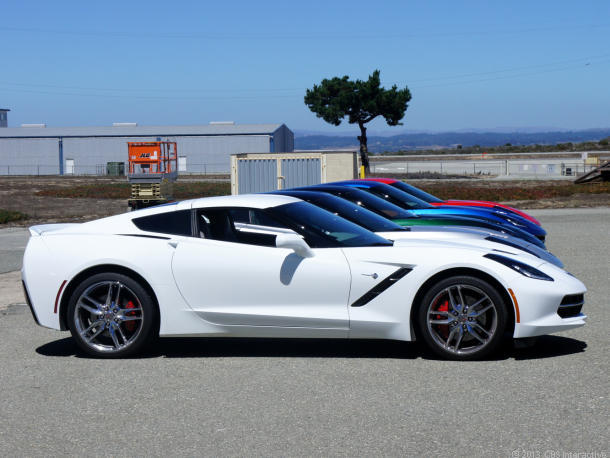The PS4 is undoubtedly at the forefront of console technology but the latest high-end gaming PCs are capable of better graphics
With both highly-anticipated next gen consoles from Sony and Microsoft MSFT +1.41% now sitting on etailer’s shelves, games as we know it are about to change. There’s no denying that the console market has, for a number of years, dictated how the graphics in modern games is developed and in many cases, the PC was left with mere ports of games that high-end models could run with their eyes shut – if PC’s had eyes that is.
Thankfully, both the new consoles have received beefed-up specifications that will only help to give game visuals a much-needed boost, driving development forward with this being a good thing for both console and gaming PC owners.
However, while the new consoles are significant leaps ahead in terms of raw processing power and design from their predecessors, it may come as a surprise that PCs are already much more powerful and capable of producing even better graphics in games.
The PS4 for example uses two quad-core CPUmodules based on its Jaguar architecture , clocked at 1.6GHz, similar to comparatively low-end models found in current budget PC’s and laptops.Lets start by taking a look at the actual hardware. AMD, who already makes CPUs, graphics cards and APUs (an APU is a CPU with an embedded graphicschip) for PCs, is behind both the PS4 an Xbox One’s primary hardware.
Even though the PS4 sports two of these quad-core chips, offering a total of eight cores, most tests of desktop Jaguar-based APUs such as those in the Kabini range like the A4-5000 have them at between 30% and 50 as fast as an Intel INTC -0.29%Pentium CPU. To quote hardware review websiteAnandTech:
ULV IVB (ultra low voltage Ivy Bridge – a 3rd Gen Intel CPU found in current laptops) is around 30-50% faster on most CPU tasks… worst-case Kabini is one third the speed of Ivy Bridge
So in terms of raw processing power, even comparatively low-end PC processors are actually just as fast or faster than the PS4 and Xbox One, which sports a similar specification. However, it’s the graphics side of things that’s of more interest. AMD has designed custom Radeon GPUs for both new consoles, but both are similar to AMD’s Radeon HD 7870 – a mid-range graphics card that following the release of AMDs latest range of graphics cards such as the R9 290X, is now comparatively old when it comes to the hardware available for the PC.
The internal workings of the PS4′s hardware is a lot like that found in a PC – Image courtesy of Chipsworks – click to see original article
To be fair, though, AMD has included a number of optimizations that will mean that the new consoles are faster than the aforementioned PC equivalents. The PS4 for example, uses GDDR5 memory whereas the A4-5000 processor mentioned earlier is reliant on a PC or laptop’s slower DDR 3 memory.
However, the performance boost isn’t going to anything revolutionary and from my own tests on PC-based AMD APU systems, boosting the memory speed by around 30 per cent yields less than a 10% performance boost in games. Even using memory that’s twice as fast as DDR3 s is likely to result in less than a 40% speed boost. There are also architectural differences plus the consoles have to deal with a less demanding operating system than say Windows 8.1, however this is only likely to offer moderate additional performance.
Then there’s the issue of 4K. PC’s are already gaming happily at 4K – the successor to 1080p or HD, and while you need a pretty pricy PC to do it – easily seven times the price of a PS4, this will come down drastically in future as PC hardware manufactures gear their products to deal with the new ultra-high resolution.
There has been much speculation about 4K support on both the Xbox One and PS4 but most reports say that while 4K video playback is likely on the cards, 4K gaming may at best be upscaled, while PC manufacturers are already selling PCs able to output full 4K detail in games that support it.
Computer Planet’s Nvidia Battlebox – a fully customized and water-cooled PC designed to play games at 4K
Price-wise, yes the PS4 and Xbox One are cheaper than a high-end PC, but using AMD’s desktop APUs instead of separate processors and graphics cards will limit the price of a PC to around that of the PS4 and allow you to play many games at 720p or 1080p. For example, combining an AMD A10-6800K, 4GB of RAM and a modest-sized hard disk but still opting for a good case and power supply will keep the cost to well below $450. In addition, you can then easily upgrade the PC when funds allow and you also have excellent gaming platforms such as Steam and Origin to play with too.
It’s each to his own, though - the PC lacks the lounge-gaming fun of a console for the most part and while PC’s are certainly getting smaller, a console still represents a very compact way of playing the latest games and most people already own a TV, whereas a decent large gaming monitor is likely to be an additional cost.
For me though, the PC is still the ultimate gaming platform and thanks to its support for 4K, regular hardware launch cycles and the continuing support of game developers, I can’t see my view changing any time soon, especially as the knock-on effect of the new console launches will mean PC game graphics will get even better in future.
 Kanto Freestyle Breakfast
Kanto Freestyle Breakfast
























